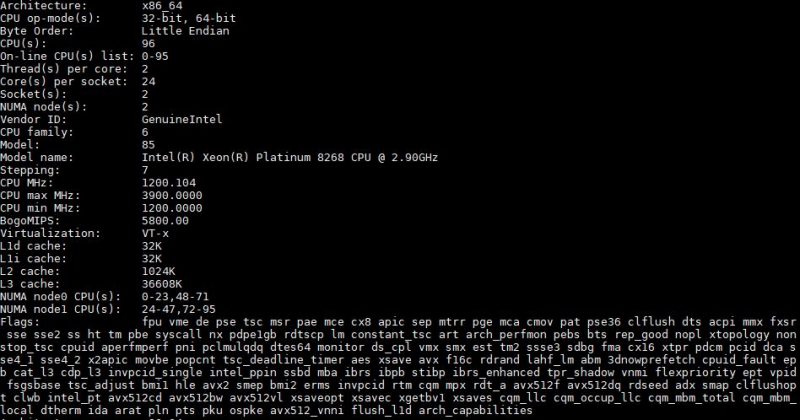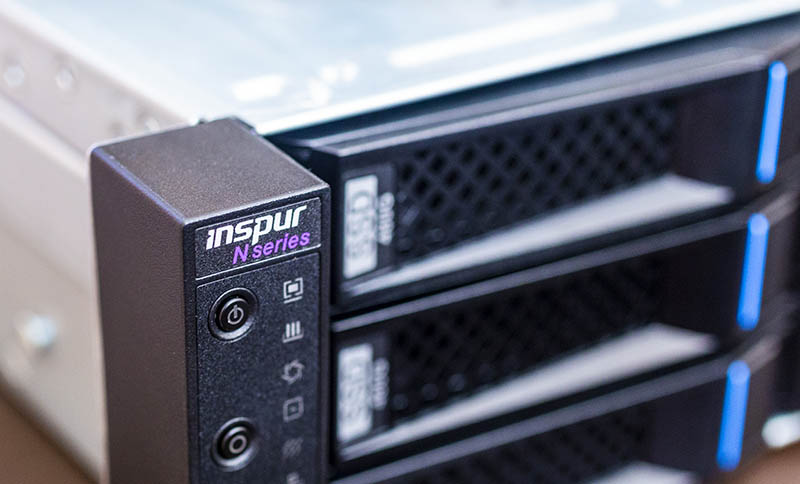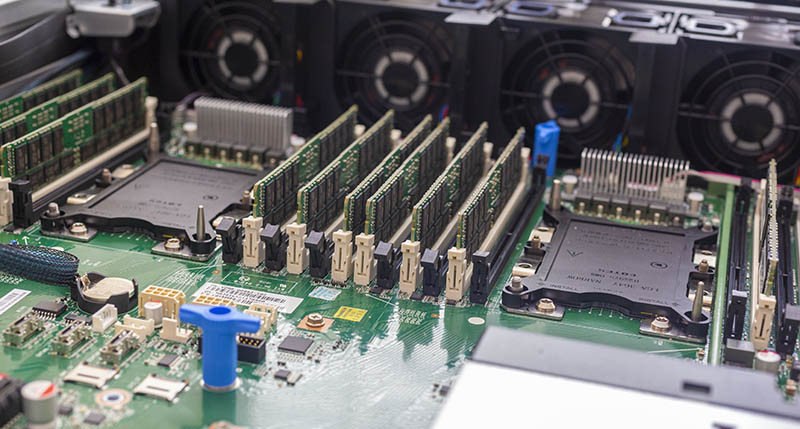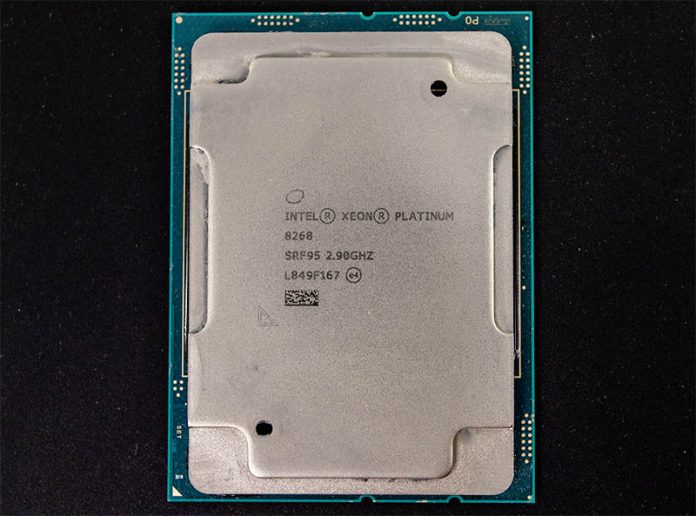It is easy to be fixated on the Intel Xeon Platinum 8280 as Intel’s “Cascade Lake” generation flagship. With 28 cores and a 205W TDP, it is designed for maximum performance. At the same time, Intel offers another SKU with 24 cores/ 48 threads and the same 205W TDP. That is the Intel Xeon Platinum 8268 that is the subject of this review. The Intel Xeon Platinum 8268 retains the ability to run in 4-socket and 8-socket configurations. In our review, we are going to see how these relatively high clock speed chips perform in our benchmarks.
Key stats for the Intel Xeon Platinum 8268: 24 cores / 48 threads and 2.9GHz base clock and 3.8GHz turbo boost with 35.75MB cache. The CPU features a 205W TDP. These are $6,302 list price parts. Here is the ARK page with the feature set.
Here is what the lscpu output looks like for the chips:

With a $6,302 list price, that is about a 37% discount versus the $10,009 Intel Xeon Platinum 8280. Like the Platinum 8280, these are high list price chips meant for heavy discounting that happens on high-end systems. Unlike the Platinum 8280 and lower power Platinum 8276, the Platinum 8268 does not have publicly available and higher-cost M and L variants. Those are the SKUs meant to recapture some value so Intel Optane DCPMM modules can remain lower-cost. Instead, with its high TDP, clocks, and lower memory configurations, this is meant to be a compute-focused chip.
Dual Intel Xeon Platinum 8268 Test Configuration
For our 2nd Generation Intel Xeon Scalable CPU dual-socket reviews, we are using the following configuration:
- System: Inspur Systems NF5280M5
- CPU: Intel Xeon Platinum 8268
- RAM: 12x 32GB DDR4-2933 ECC RDIMMs
- Storage: 2x Intel DC S3520 480GB OS
- PCIe Networking: Mellanox ConnectX-4 Lx 25GbE, Intel X710 4x 10GbE SFP+
A quick note here, we did not utilize the Intel Optane DCPMM here because we had standard chips. Using Intel Optane DCPMM even with two 128GB modules per CPU to stay well below the 1TB per CPU memory limit would have meant our memory would work at only DDR4-2666 speeds.

The Inspur Systems NF5280M5 is a dual-socket Intel Xeon Scalable solution that has a variety of I/O configurations. We kept our test unit relatively light on rear riser cards to ensure we had significant airflow for the Intel Xeon Scalable line we would test up to 205W TDP.

We are going to add a link to our full Inspur Systems NF5280M5 review once that is online in the next few weeks.
Next, we are going to take a look at our Intel Xeon Platinum 8268 benchmarks, we are then going to focus on power consumption then conclude with our final words on the processors.





We’re talking $750 per core more to go 8280. Your paying more for those incremental cores than 12 core Xeon Silver. How did we get to this?
The problem AMD is going to have, and probably already has, is software ‘per core’ licensing. It’s not enough to have a bunch more cores, they have to be faster per core. If not you’ll get cool hardware that will absolutely kill you on software costs.
We will have a big discussion of that in our Rome launch.